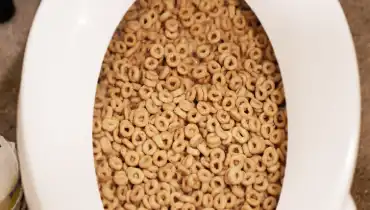Are You Capable to Dispose of Food in the Toilet?
Are You Capable to Dispose of Food in the Toilet?
Blog Article
What are your concepts on Is it safe to flush food (especially rice) down the toilet??

Intro
Many individuals are typically confronted with the dilemma of what to do with food waste, particularly when it pertains to leftovers or scraps. One usual question that emerges is whether it's okay to purge food down the commode. In this article, we'll delve into the reasons that individuals could consider purging food, the repercussions of doing so, and different techniques for appropriate disposal.
Reasons why people may think about flushing food
Absence of recognition
Some individuals may not recognize the potential injury brought on by flushing food down the toilet. They may incorrectly think that it's a safe practice.
Ease
Flushing food down the bathroom might look like a fast and easy option to taking care of undesirable scraps, especially when there's no neighboring garbage can offered.
Idleness
Sometimes, individuals may simply pick to flush food out of large laziness, without taking into consideration the repercussions of their activities.
Effects of flushing food down the toilet
Environmental effect
Food waste that winds up in rivers can add to air pollution and injury marine ecological communities. Additionally, the water made use of to flush food can strain water sources.
Pipes issues
Flushing food can lead to clogged pipes and drains pipes, triggering pricey plumbing repair work and troubles.
Types of food that should not be purged
Coarse foods
Foods with coarse textures such as celery or corn husks can obtain tangled in pipes and create blockages.
Starchy foods
Starchy foods like pasta and rice can take in water and swell, bring about obstructions in pipes.
Oils and fats
Greasy foods like bacon or cooking oils must never be purged down the commode as they can solidify and cause obstructions.
Proper disposal techniques for food waste
Utilizing a garbage disposal
For homes equipped with garbage disposals, food scraps can be ground up and flushed via the pipes system. However, not all foods are suitable for disposal in this fashion.
Recycling
Specific food packaging products can be reused, decreasing waste and minimizing environmental effect.
Composting
Composting is an environmentally friendly method to get rid of food waste. Organic products can be composted and utilized to enhance dirt for gardening.
The importance of appropriate waste administration
Lowering environmental damage
Appropriate waste administration practices, such as composting and recycling, aid decrease air pollution and preserve natural deposits for future generations.
Securing plumbing systems
By avoiding the practice of flushing food down the bathroom, homeowners can avoid expensive plumbing fixings and preserve the integrity of their plumbing systems.
Final thought
Finally, while it may be appealing to flush food down the bathroom for comfort, it's important to comprehend the prospective effects of this action. By embracing appropriate waste management practices and throwing away food waste sensibly, individuals can contribute to healthier plumbing systems and a cleaner environment for all.
FLUSH FOOD DOWN THE TOILET?
FLUSHING FOOD CAN CAUSE BLOCKED DRAINS IN YOUR HOME
All of the plumbing fixtures in your home are connected to the same sewer pipe outside of your home. This outdoor sewer pipe is responsible for transporting all the wastewater from your home to the Council sewer mains. Even small pieces of food that go down the kitchen sink can cause problems for your sewer. It should therefore be obvious that flushing larger bits of food, such as meat, risks a clog in either the toilet itself or the sewer pipes. Flushing greasy food is even more problematic because oil coagulates when it cools, coating the interior lining of your pipes.
THE TOILET IS NOT A BIN
Food isn’t the only thing that people shouldn’t be flushing down the toilet. People use the toilet to dispose of all kinds of things such as tampons, makeup wipes, dental floss, kitty litter and even underwear. Water goes to great lengths to educate residents about the high costs and stress placed on wastewater treatment systems simply from people flushing the wrong stuff down the toilet. It costs taxpayers millions of dollars each year, and homeowners thousands in blocked drain repairs.
FLUSHING FOOD IS A WASTE OF WATER
Flushing food is a waste of our most precious resource - water. In June this year Level 1 water restrictions were introduced to protect water supply from drought conditions. Much of New South Wales continues to be affected by prolonged drought with recent figures revealing up to 97 per cent of the state remains in drought. Depending on whether you have a single or dual flush toilet, every single flush uses between five and 11 litres of water. In the current climate this is a huge amount of water to be wasting on flushing food that should be placed in the bin (or better yet, the compost).
https://www.jabplumbingsolutions.com.au/blog/can-you-flush-food-down-the-toilet

Do you really like more info about Is it safe to flush food (especially rice) down the toilet?? Put feedback below. We'd be pleased to know your thoughts about this page. Hoping to see you back again before long. In case you enjoyed reading our page please remember to pass it around. Many thanks for being here. Come back soon.
Visit Page Report this page